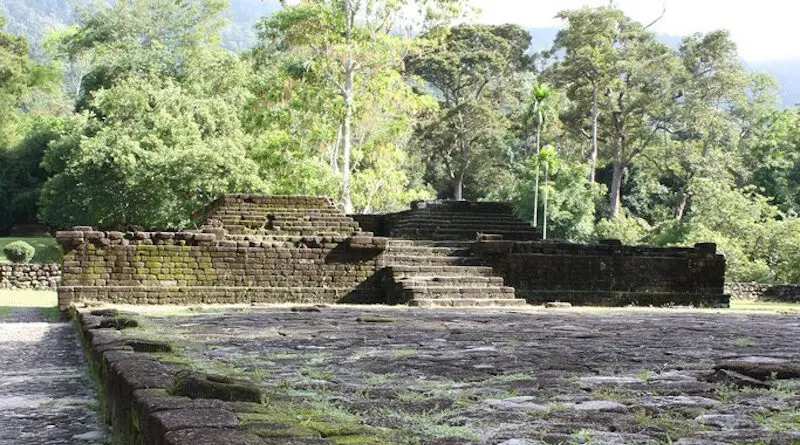Archaeological Sites In Kedah Should Force A Rewriting Of Malaysian History – OpEd
Evidence of a once vibrant ancient civilization has been uncovered in the northern states of Penang and Kedah in Malaysia. In the 1830s, Colonel James Low uncovered a large boulder with carved Indic scripts in Province Wellesley (now Seberang Prai), dating back to the 5th and 6th centuries AD.
This was not an isolated discovery, as other archaeological sites were later discovered prior to WWII, complete with relics and temple ruins. Local archaeologist Mokhtar Saidin in 2007 found more than 80 sites with remains of Candi Hindu-Buddhist burial sites and temples in the Sungai Batu region of the Bujang Valley in Kedah.
Clues of this past civilization covers an area of over 1,000 square kilometres, where more than 200 satellite sites have been discovered as far away as Yarang in Patani Province in Southern Thailand. This is the oldest archaeological site on the Malay peninsula and south-east Asia. These artefacts and ruins are older than Indonesia’s Borobudur and the Khmer Angkor Wat in Cambodia, to give some context. Although the remaining structures are no where as grand as those in other well known temple ruins in the region, the extent of territory covered gives a glimpse of the massive size of this ancient civilisation.
Some of the sites reveal an iron bar industry dating back to as early as 788 BC. There are remains of jetties used to export iron bars, Aloewood (Aquilaria) and camphor to China in the east, India and Arabia in the west. The Bujang Valley appears to have been an early waypoint stop.
The Bujang Valley was referred to in Tamil poems during the second and third centuries, and recorded by the Chinese explorer I-Ching, who visited the civilization in 673 and 685 AD. The Bujang Valley site shows a thriving civilisation much older than the Srivijaya period, although co-existing with early Srivijaya civilization centred around Chaiya in Surat Thani from the 3rd to 13th centuries.
The former president of the Malaysian Senate and minister for Information, communications and culture Rais Yatim stated “If indeed the Sungai Batu find in the Bujang Valley factually revisits the civilisation that existed in the first century AS, then the history of this country will almost certainly have to be rewritten in its proper civilisational context.”
However, successive governments have been unwilling to apply for the UNESCO World Heritage List for one of the oldest archaeological sites in the world that stands equal to Mesopotamia, Indus, Mesoamerica, China, and Greek-Roman civilizations.
Inconvenient truths
The official political history of Malaya, promoted by the establishment begins with Sejarah Melayu or the Malay Annals, which begins in the 15th and 16th centuries, establishing the authority of the Malay Sultanates under Islam. The peninsula’s Candi Hindu-Buddhism heritage is an inconvenient truth that detracts from the Ketuanan Melayu or Malay overlordship or supremacy ideology.
This political concept dominates Malaysian politics today, and justifies Article 153 (1) of the Malaysian Constitution which dictates that; “It shall be the responsibility of the Yang di-Pertuan Agong to safeguard the special position of the Malays and natives of the states of Sabah and Sarawak and the legitimate interests of other communities in accordance with the provisions of this Article.”
Thus, the term Malay is a construct of many different ethnic groups or ethno-cluster that speak Bahasa as a lingua franca. These include Bugis, Jawa, Riau, Batak, Bruneian, Ambonese, Manado, Betawi, Kelantanese, Kedah, Minangkabau, sea gypsy (Orang Laut), and others. The Patani Melayu in southern Thailand refer to themselves as Orang Patani, rather than Malay, where their language is called Jawi rather than Malay.
The Malay identity, as an alternative to identifying with the river kingdom or Sultanate they lived within (e.g. Orang Johor) was strengthened by the British in the 1940s. The Ketuanan Melayu ideology, although in existence in pockets throughout the Malay Peninsula or Tanah Melayu, became a political tool used by the Malay politi, since the race riots back in May 1969, primarily to consolidate power.
The stark reality of Malaya is that with the exception of direct descendants of the Candi, Langkasuka empires, and the Orang Asli, and perhaps some of the sea gypsies, all the peoples of Malaya today, once migrated to Tanah Melayu at some time in the past. There are many Chinese, Indian and Arab-Indians whose families have been on the peninsula for many generation more than many Malay families.
The sites in Bujang Valley stand as a testimony to the strong Hindu-Buddhist influence before the coming of Islam to the peninsula arounds 1474. The archaeological ruins of Bujang Valley indicate the existence of a vibrant and innovative civilization before the Malay River Sultanates brings up the question of the Bumiputera construct.
One group deeming another ‘pendatangs’, new comers, or immigrants is politically discriminating, similar to other forms of Apartheid that were once practiced in countries like South Africa and Fiji. In Malaysia privilege is given to people based upon ethnicity, language and religion, under the mythology that those within the Bumiputera construct has special rights because a skewed historical narrative that deemed them the original habitants of Malaya, as Bumiputeras or Princes of the soil.
The discovery of an earlier civilisation to the Malay Sultanates adds further weight to those who dispute the legitimacy of Article 153 of the Constitution. Article 153 of the Constitution was originally destined to have a ‘sunset time’, where all citizens of Malaysia were presumed to be equal under the Constitution.
Its time that Malaysian history be critically reinterpreted beyond the current politically correct narratives based upon Ketuanan Melayu as the presuming ideology. This is a much better alternative than dismantling and destroying ancient sites as happened back in 2013 to structures marked as “Candi site II” in the Bujang Valley.

